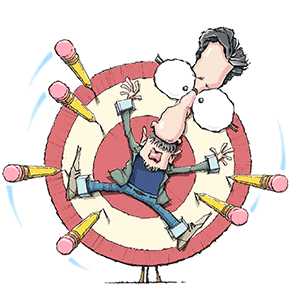While Trump denies influence of hate groups, white nationalists appeal to alienated young men
By now, no one should be surprised to hear that the 28-year-old white supremacist who is accused of killing 50 people in two mosques in Christchurch, New Zealand, cites this country's president, Donald Trump, as his inspiration.
"Were/are you a supporter of Donald Trump?" Australian national Brenton Tarrant asks himself in his rambling 74-page manifesto, consisting mostly of excerpts from other people's writings. "As a symbol of renewed white identity and common purpose? Sure. As a policy maker and leader? Dear god no."
Dear God, indeed. When Trump was asked if he thought hate groups were on the rise after the massacre at the New Zealand mosques, he said, "I don't think so." Experts say otherwise. It's hard to imagine that the president believes otherwise, after all that he has done, intentionally or otherwise, to fertilize that rise.
Among other examples of why the alleged Australian terrorist might have found some sense of shared "common purpose" with President Trump:
In 2011, Trump first raised the bogus claim that President Barack Obama was secretly a Muslim.
In November 2015, he falsely claimed that thousands of Muslims cheered in New Jersey when the World Trade Center collapsed in the Sept. 11, 2001, terrorist attacks.
The next month he called for a ban on all Muslims entering the United States.
In March 2016 he falsely claimed that "Islam hates us."
I hear on such occasions a far-right version of virtue-signaling. If he's not an Islamophobe -- and he insists he is not -- neither does he show any desire to alienate the bigots in his base.
Thus we get this nod-and-wink in his declaration after the August 2017 Charlottesville, Va., clash between white nationalists and anti-racists in which a woman was killed over the removal of a Confederate statue: "I think there is blame on both sides," the president told reporters. "You had some very bad people in that group. But you also had people that were very fine people, on both sides."
I was disappointed, at best, to hear him equate the side that included white supremacists with the side that didn't. But former Ku Klux Klan leader David Duke, among others in Charlottesville that day, said he was delighted.
As offended as I am by Trump's pussyfooting around with racists, I am learning a lot from watching how he makes it work for him. The very fact that he signals welcome to the alienated young men who make up a key demographic in organized hate groups gives him a lot of mileage with them and their allies, according to those who have belonged to such groups.
"What drew me in at 14 years old in 1987 was that I was searching for identity, community and purpose," former Chicago skinhead Christian Picciolini said Sunday on NPR's "All Things Considered," "and that's something that everybody searches for."
Picciolini, now 45, eventually saw the light and left the white power movement. He wrote a memoir and co-founded the peace advocacy group Life After Hate to help other misguided youths put supremacism behind them.
But I was particularly taken with his trio of life goals that "everybody searches for": identity, community and purpose.
Much has been written about the epidemic of alienated young people in modern post-industrial America. That landscape was fertile ground for the man who Picciolini, who grew up in south suburban Blue Island, says recruited him through "the narrative of white supremacy."
Much also has been written about the salience that narrative has gained with the help of the internet throughout Western civilization -- including in the lands down under such as Australia and New Zealand.
That's why Tarrant's screed pays tribute to, among other haters, Anders Breivik, the Norwegian far-right terrorist who killed 77 people in 2011, most of them children. He became an international icon among white-power followers by posting his own lengthy screed on the internet, where he had scrounged up most of its content.
That empowering of haters gives urgency to discussions about how to clean up the internet. But all of us can do something to help break the cycle of hate, fear and resentment. Asked how he decided to take his exit from the skinheads, Picciolini said: "Ultimately, you know, it was interactions with people of color who, you know, showed me compassion when I least deserved it. And those moments of clarity added up."
Other former hate group members tell similar stories. So, by the way, have African-Americans I have known who fortunately decided that certain "hate whitey" movements offered more self-destruction than self-fulfillment. We're all searching for identity, community and purpose in our lives, as Picciolini said, especially when we're young. When we're older, we need to offer similar guidance to others, before it's too late.
(E-mail Clarence Page at cpage@chicagotribune.com.)
(c) 2019 CLARENCE PAGE DISTRIBUTED BY TRIBUNE MEDIA SERVICES, INC.






